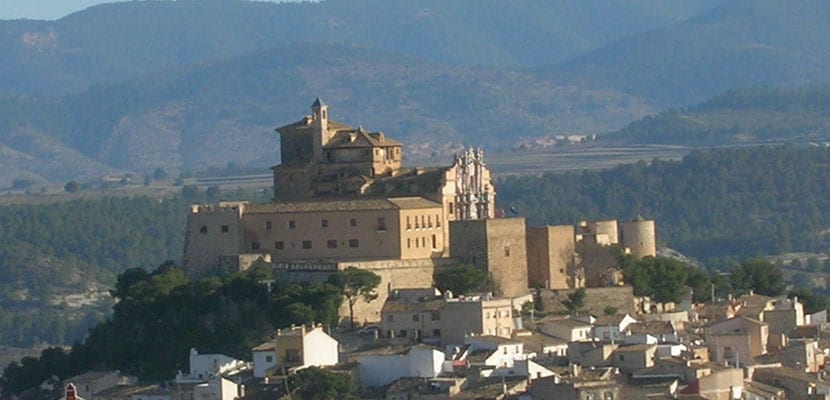
Caravaca de la Cruz is a Spanish city located in the northwest of the province of Murcia. A town through which different peoples such as Iberians, Romans or Muslims passed throughout history and which is built around its castle, built by the Commandery of the Templars in the XNUMXth century.
During the XNUMXth and XNUMXth centuries, Caravaca de la Cruz lived its maximum splendor when it became the political center of a large territory. In this way, this city has a rich artistic-cultural heritage as a result of its historical importance. But Caravaca is, essentially, the fifth city Holy City of Christianity.
Like Santiago de Compostela, it celebrates a jubilee year "in perpetuam", which takes place once every seven years. On January 9, 1998, the Holy See made this concession given the devotion to the Vera Cruz and the importance of the future projection of its Basilica and the city of Caravaca de la Cruz.
The present year 2017 indicates that we are in the middle of the jubilee year and thousands of faithful and travelers will make a pilgrimage to its famous Sanctuary of Vera Cruz. The Jubilee Year 2017 is a good excuse to get to know one of the most monumental cities in the Murcia region.
History of the Sanctuary of Vera Cruz de Caravaca
According to legend, the Moorish king Abu Zeid converted to Christianity in 1232 when he watched two angels bring down a cross from heaven so that a priest imprisoned in the castle could say mass. The lignum crucis fragment would be transported from Jerusalem to Caravaca for this purpose. This legend gave rise to the construction, starting in 1617 and in the enclosure of the fortress itself, of the main monument of this town in northwestern Murcia: the Sanctuary of Vera Cruz. Currently, the wood fragment is preserved here in a reliquary in the form of a double-armed, oriental and patriarchal cross. The case is a copy of a model dating from the XNUMXth century, which in turn comes from other older cases.
Sanctuary of the Vera Cruz
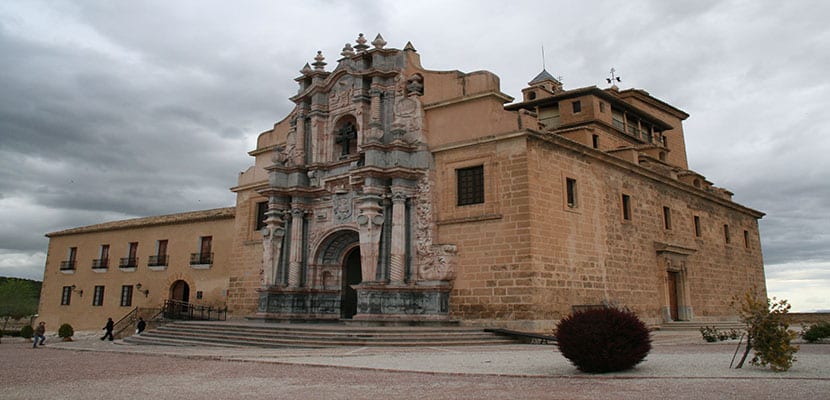
The Sanctuary of Vera Cruz de Caravaca is located at the top of a walled mound, being visible from different points of the city. It constitutes the most important nucleus of Caravaca de la Cruz due to its historical, cultural and religious significance.
The esplanade of the Sanctuary is accessed from the Cuesta del Castillo. The building has a Latin cross plan and its main façade, made with local marble, is one of the best Baroque examples in the region.
It was built in the seventeenth century inside the old medieval fortress built by the Muslims, it has an entrance through a door located in the wall that faces west. It has an irregular plan and surrounds the enclosure, preserving fourteen bastions and towers from medieval times, the highest of which is in the eastern part and is known as 'Torre Chacona'.
The interior of the temple is divided into three naves in a post-Herrerian style. The sacristy is accessed from the Gospel side, while in the Epistle there is the Vera Cruz de Caravaca chapel.
Museum of the Vera Cruz

Image | Murcia Today
The Museum of the Vera Cruz de Caravaca is located inside the Sanctuary in the Casa del Capellán. It consists of three rooms dedicated to the history of the Sacred Relic, the liturgical furnishings and the archeology of the Sanctuary. Here important pieces of sacred art are exhibited and there are the archaeological remains of the old medieval fortress on which the current Sanctuary of the Vera Cruz was built.
The moat from the War of Independence, the large medieval cisterns, and the Toscas tower, where the Pilgrim Service Office is located, have also been recovered. On March 18, 1944 it was declared a National Historic Monument.
Other places of interest in Caravaca de la Cruz
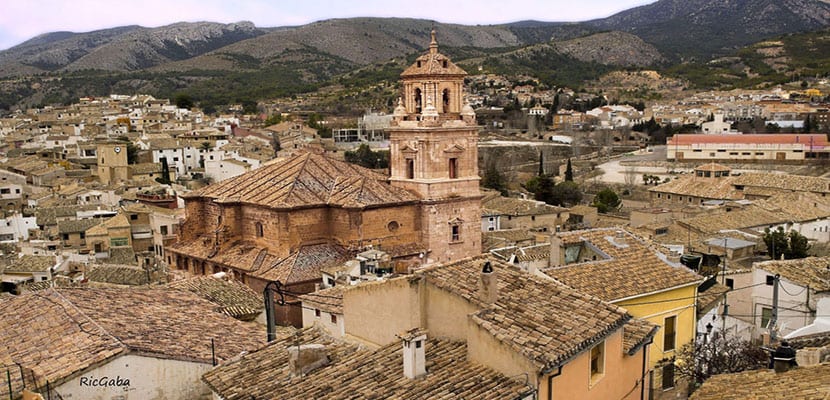
Church of the Savior | Image via Ricard Gabarrús
In Caravaca de la Cruz there are other monuments to visit during the jubilee year 2017 such as the Church of El Salvador, a masterpiece of the Murcian Renaissance, which was declared a Historic Artistic Monument. It is also worth visiting the church of La Soledad (current archaeological museum), the convent of the Carmelites founded by San Juan de la Cruz and La Purísima Concepción, built on the old church of the Hospital Cofradía de San Juan de Letrán in the XNUMXth century. In Renaissance style, inside there are beautiful barrel altarpieces and Mudejar coffered ceilings.
Other places of interest in Caravaca de la Cruz are the Fiesta Museum (located in the Uribe palace) which is dedicated to the Wine Horses and the Moors and Christians festivities. Also the Carrilero Museum and the Ethnic Music Museum, in the nearby district of Barranda, 14 kilometers from Caravaca.
Ecotourism in Caravaca de la Cruz
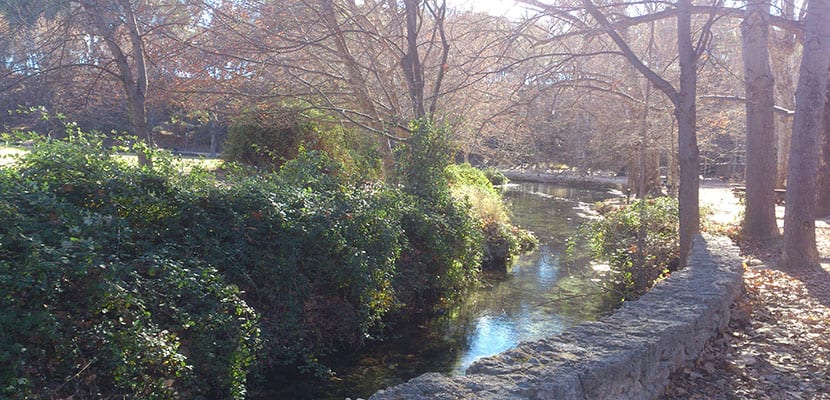
Just two kilometers from this Holy City there is a natural area of incredible beauty known as the Fuentes del Marqués. In it you can find a spring of fresh and crystalline waters as well as a great variety of vegetation such as olive trees, holm oaks or ash trees. Next to the source there is an old defensive tower, a bastion from the XNUMXth century, which currently houses the interpretation center of the mountains and highlands of Murcia.
On the other hand, ecotourism lovers will love walking or cycling the Northwest Greenway, the main path of all those that pilgrims follow to reach the Sanctuary. The 78-kilometer path takes advantage of the old railway line that linked Caravaca de la Cruz with the Murcian capital. Today is a long natural road with a pilgrim soul full of contrasts. From the lunar landscapes following the Mula river to the orchard that irrigates the Segura. Many of the old stations on this railway line have been recovered as a hostel, so they can be enjoyed while stopping along the way.
Information of interest for pilgrims to Caravaca
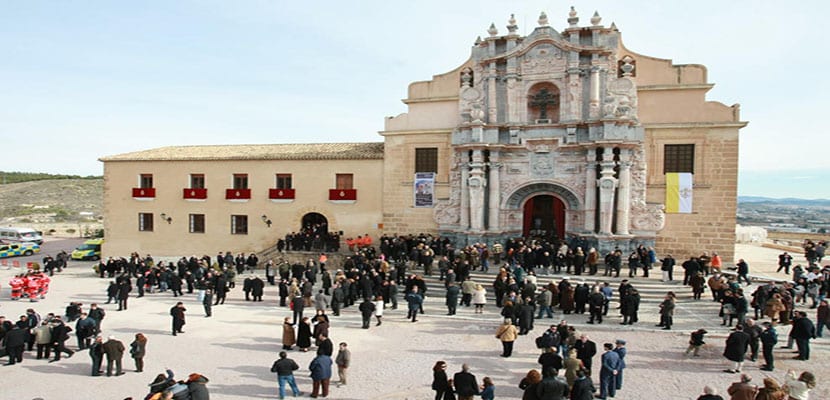
Image | The city of the cross
Conditions for the pilgrim to receive the Jubilee:
- Visit and participation in any celebration in the Sanctuary of the Vera Cruz de Caravaca, with the devotion and intention of winning the Jubilee and praying for the intentions of the Pope.
- In case of not being able to participate in a celebration, it is enough to visit the Shrine and pray for world peace and the intentions of the Supreme Pontiff.
- Sacramental Confession and Eucharistic Communion. It is not mandatory to receive these sacraments on the day of the visit in the Shrine. They can be received before or after the pilgrimage to the Temple of the Cross in another church or parish.
Dates to receive the Jubilee:
- Every seven years, on the days of the Opening and Closing of the Jubilee Year and on other days of said year when the bishop presides over a solemn rite.
- Once a year, on the day freely chosen by the faithful.
- Whenever, out of devotion, a group pilgrimage to the Basilica - Sanctuary of Caravaca de la Cruz.
- On May 3 and September 14, festivities of the discovery and exaltation of the Holy Cross.
Tradition of giving a Caravaca cross
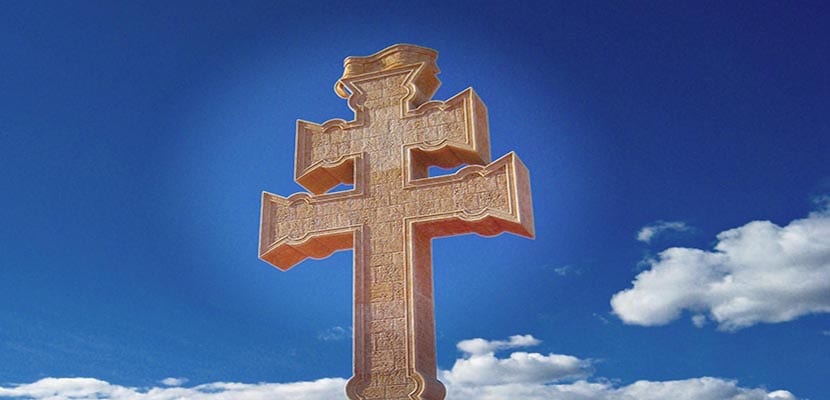
Image | Predictions Magazine
It is an eastern cross, from Jerusalem, guarded in this city by the Order of the Temple and later by that of Santiago. His miraculous appearance to a Christian religious held captive by Muslims symbolizes his all-encompassing and protective force. Its reputation for being miraculous attracts many visitors to Caravaca de la Cruz.
Thus, giving a Caraaca cross is a general custom since at least the XNUMXth century, when there is documentary evidence that the Carmelite nuns of the city gave one to Saint Teresa of Jesus as a token of affection.
The delivery of the Caravaca cross is a symbol of love and peace among men. In many shops in the city you can find one with which to remember your pilgrimage to the Holy City in this Jubilee Year 2017.